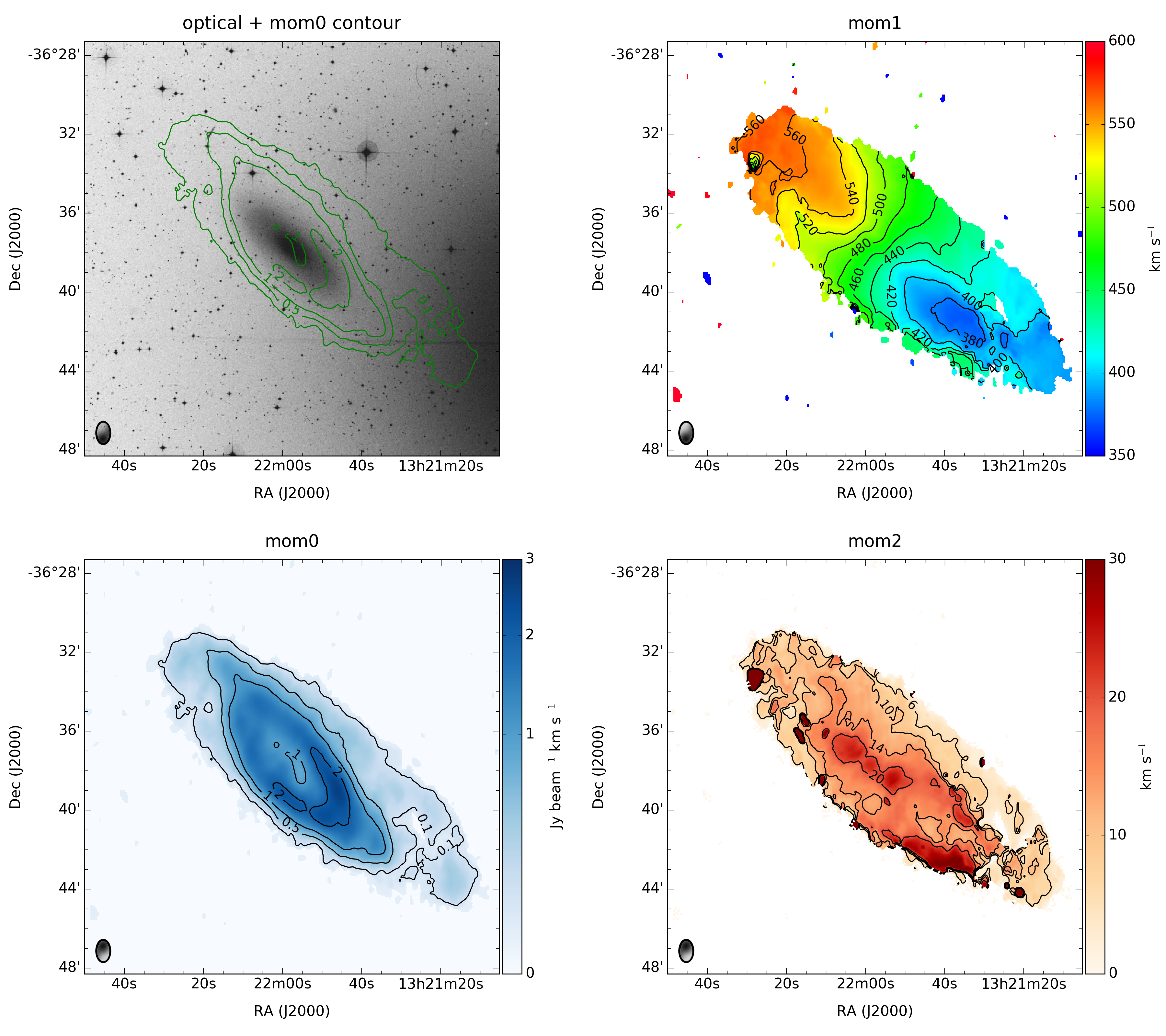NGC 5102

NGC 5102 (HIPASS J1321-36)
is a large lenticular galaxy of type SA0 at a TRGB distance of 3.40
± 0.39 Mpc (Karachentsev et al. 2002) located in the outskirts of the
Cen A group. Its nearest neighbours are HIPASS J1337-39 (267.5 arcmin), HIPASS
J1305-40 (287.2 arcmin), and ESO 324-G024 (298.4 arcmin); projected distances
are given in brackets. Our ATCA HI moment maps reveal a large, somewhat
asymmetric HI disc with a central HI depression that coincides with the bright
stellar body. Most of the galaxy's HI emission resides in a ring-like structure
of 3.5 arcmin radius, also seen by van Woerden et al. (1993), surrounded by
much fainter emission in the outskirts. A prominent HI extension to the
south-west resembles a tidal arm, suggesting ongoing gas accretion. NGC 5102's
HI velocity field highlights the lopsided and mildly warped nature of the disc.
We measure FHI = 85.4 Jy km/s, within the uncertainties of the
HIPASS FHI (Koribalski et al. 2004), resulting in MHI
= 2.3 × 108 M☉. Using the VLA CnD-array van
Woerden et al. (1993) only detect the HI emission within the inner disc/ring
of NGC 5102 and measure FHI = 50 Jy km/s. Using 3D FAT Kamphuis et
al. (2015) obtain an HI rotation curve indicating vrot = 94.3 km/s
at Rmax = 10.5 kpc (for i = 75.3 degr and PA = 42.2 degr) and
Mdyn = 2 × 1010 M☉. Based on a
stellar population study Davidge (2008) find NGC 5102 to be a post-starburst
galaxy. Mitzkus et al. (2016) provide an excellent literature overview and
analyse the stellar population and kinematics in the central region of
NGC 5102 via MUSE data, suggesting two counter-rotating stellar discs. Faint
radio continuum emission is detected in the galaxy core (1.7 ± 0.5 mJy).
Reference:
Koribalski et al. 2018
* LVHIS database
* LVHIS homepage
* next